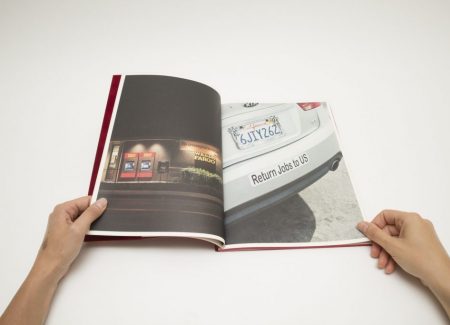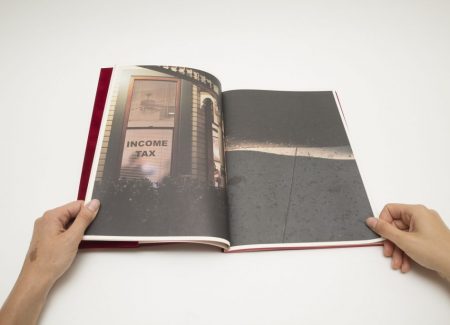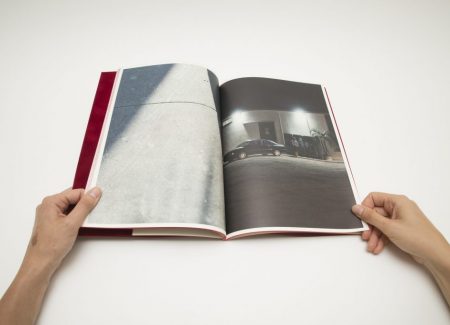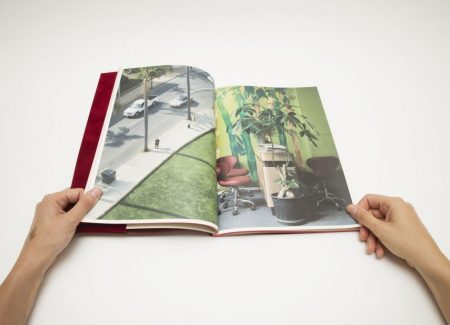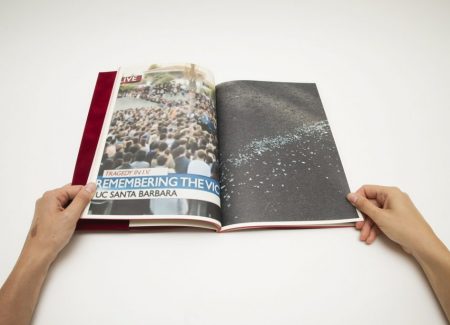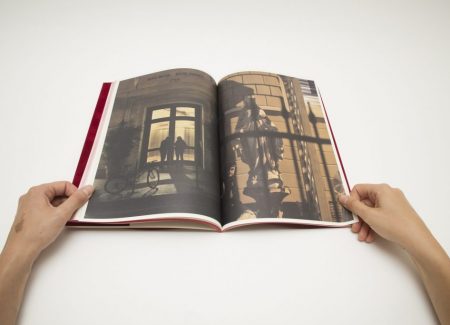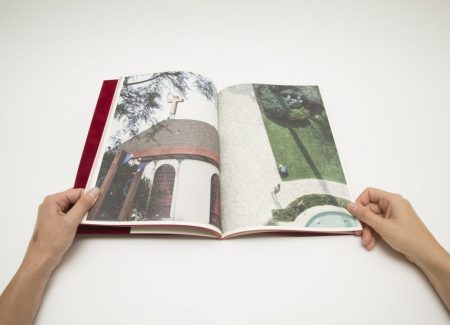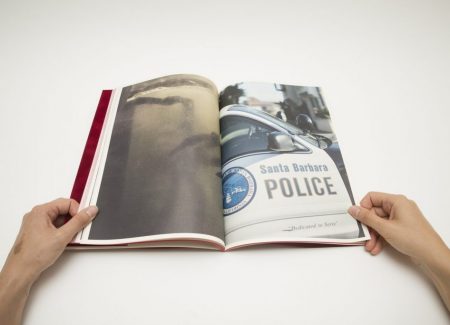JTF (just the facts): Published by Skinnerboox in 2016 (here). Softcover, 112 pages, with 112 color and black and white photographs. There are no explanatory texts or captions in the book. Includes a booklet with an essay by Jonathan Blaustein. In an edition of 450 copies. (Cover and spread shots below.)
The photobook is also available in a special edition (here). This includes a copy of the book with two prints. In an edition of 50 copies.
Comments/Context: The work of photographer Alejandro Cartagena focuses on social and environmental issues, and often reflects on the complex process of urbanization. A few years ago, he received widespread praise for the release of his self-published photobook Carpoolers (reviewed here), a project that documented the daily commute of workers, as seen in the rectangular backs of pickup trucks shot from the above the highway. His typological study was presented in an inventive book format, leading to deeper questions about the lives of migrant workers.
Cartagena’s most recent photobook Santa Barbara Return Jobs Back to US offers a quite different photographic style and narrative. As a thoughtful bookmaker, Cartagena pays special attention to the photobook format and takes time to develop a book concept to fit a particular body of work. He started working on this project during his artist residency at the Santa Barbara Museum of Art, with an intention to explore the idea of a place, its cultural construction and representation.
The design of Santa Barbara Return Jobs Back to US plays with the idea of duality and things not being what they appear to be at first sight. The book’s red hotfoil velvet cover is the first of the elements that highlights this feeling. The smooth cover together with the intentionally ostentatious rococo inspired golden lettering of the title are very deceptive – the content is drastically different from this initial impression of luxury.
Inside, the book opens with an illustration map showing rugged terrain, perhaps depicting the Cuyama Valley in California, yet it is not entirely clear. Santa Barbara, a city on the central California coast, has long been an idyllic destination for many of Los Angeles’ super rich and famous. It is a year-round tourist locale, a secluded place with blue skies, sun, beautiful wide beaches, Spanish architecture and smiling people. In many ways, it represents a stereotypically perfect image of the lavishness of American life, crystallized by a decade long soap opera Santa Barbara which achieved a worldwide popularity. Cartagena’s book questions this simplistic perception of a place, and offers an alternate vision of the so-called American Riviera.
All of photographs included in the book are the same size, full bleed with a narrow white border, creating a continuous visual flow that treats all the images equally. This is important because of the wide variety of imagery Cartagena has chosen to include. His snapshots of Santa Barbara range from a close up of a mattress left outside on the street and shattered pieces of glass on the pavement to dark streets with people walking or standing illuminated by the screens of their cell phones. As we flip through the pages, a number of themes start to emerge from the visual flow. There are numerous bank facades and tax preparation offices, reminding us of the high finance that underlies such wealthy communities. A screenshot of a news report connects back to a 2014 mass shooting and references the reality of ongoing gun violence in this country. Other images depict California bungalow houses, religious icons, cheerleaders, and the flags of the Unites States, alongside a number of links to popular soap operas. One by one, these snapshots don’t carry any significant information, but in a connected narrative, they create a surprisingly discouraging atmosphere – he’s exploring the gloomy layers of issues and symbols hiding in plain view in American culture, many of these details more obvious and visible to the eyes of an attentive outsider.
To add more layers to the representation of a place and introduce some additional dissonance, Cartagena has incorporated found Internet images from other cities also called Santa Barbara (in Chile, Mexico, Venezuela, and elsewhere). These pictures blend into the visual narrative without any special identification (they are briefly mentioned in the text by Jonathan Blaustein), once again challenging our perception and supposed understanding of this particular place. One telling combination brings together an illustration depicting an early Christian Greek saint named Saint Barbara, the patron saint of artillerymen, and an image of a sign reading “USA Gasoline”.
In Cartagena’s hands, Santa Barbara is no longer a representation of something stereotypically specific, but instead edges toward a larger and more universal set of themes that undermine that initial expectation. His photobook thoughtfully unpacks the idea of a place, and then reconstructs it in a form that questions what we know. Where it succeeds is that it reaches beyond a simplistic catalog of good/bad or rich/poor, building up a nuanced portrait that ultimately dissolves into open ended uncertainty.
Collector’s POV: Alejandro Cartagena is represented by Kopeikin Gallery in Los Angeles (here). His work has little secondary market history at this point, so gallery retail remains the best option for those collectors interested in following up.


